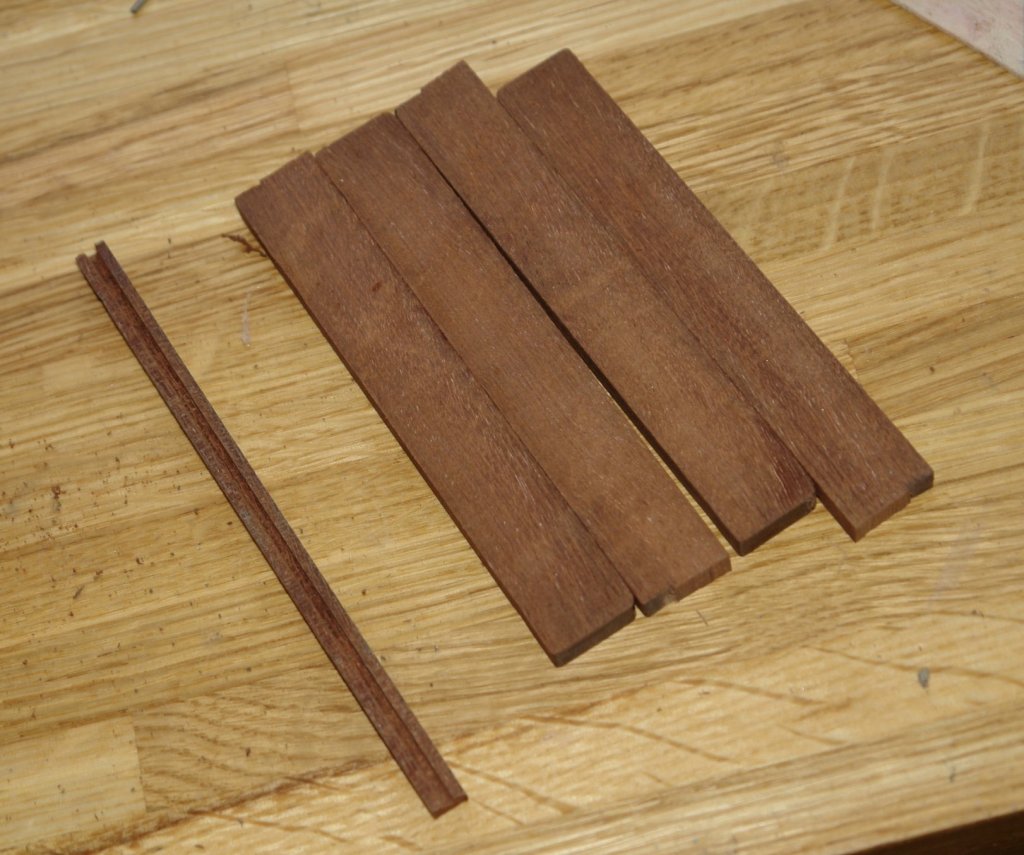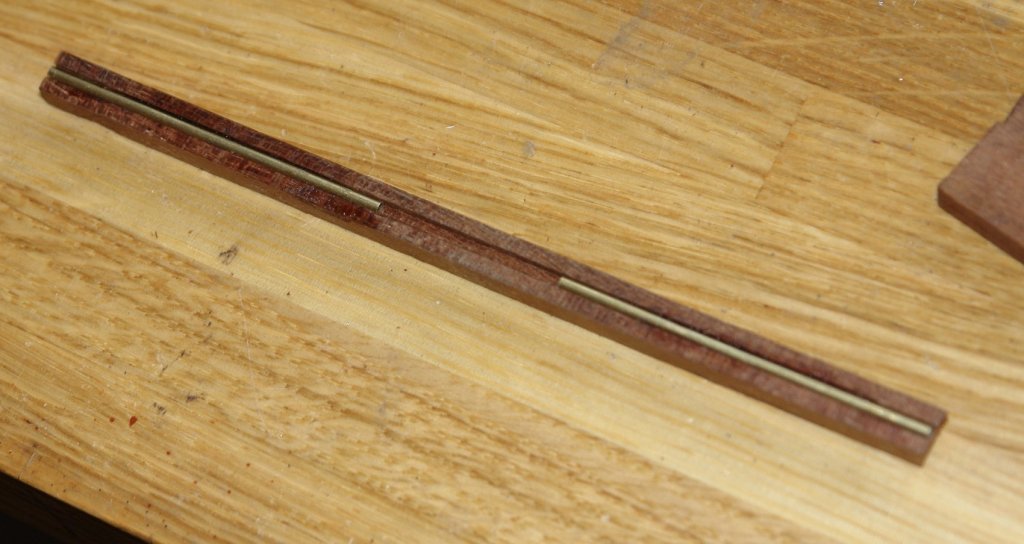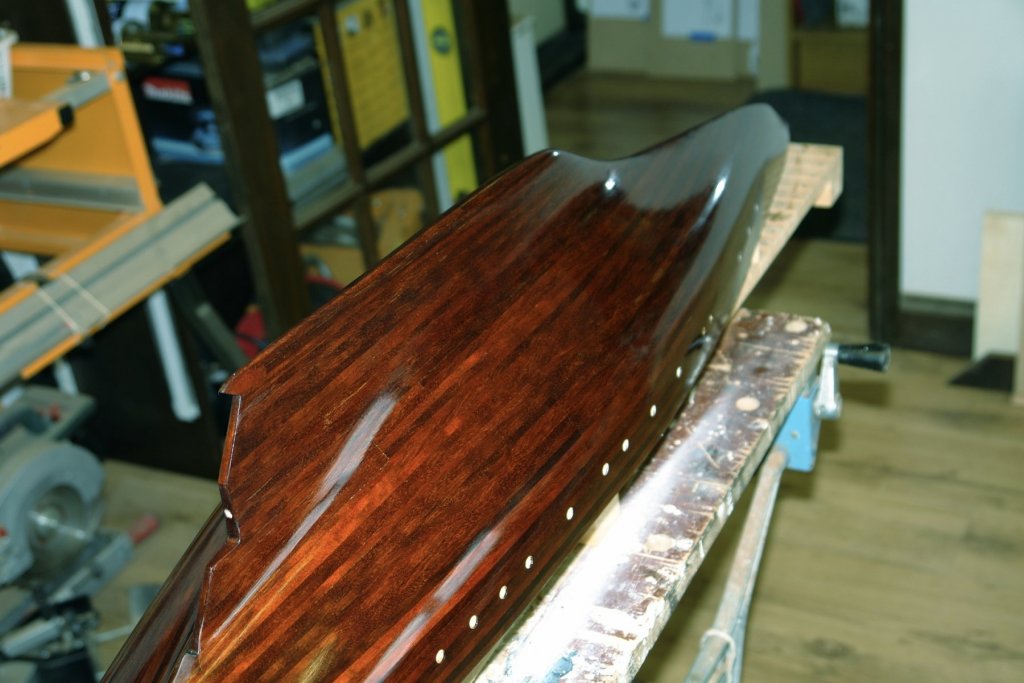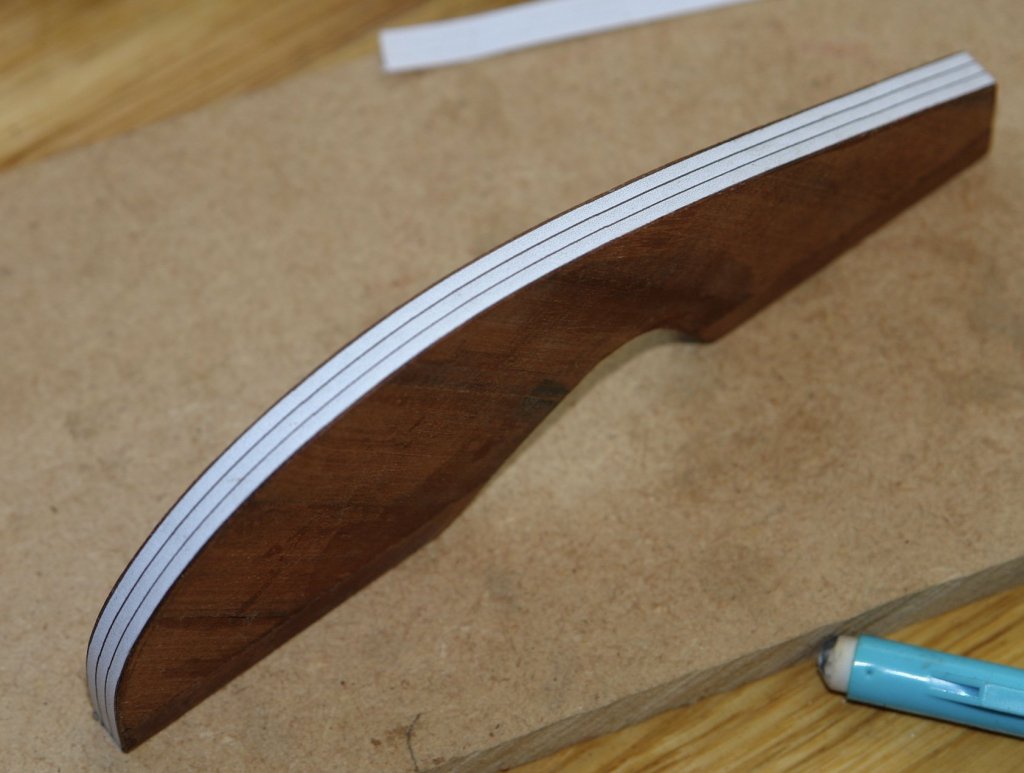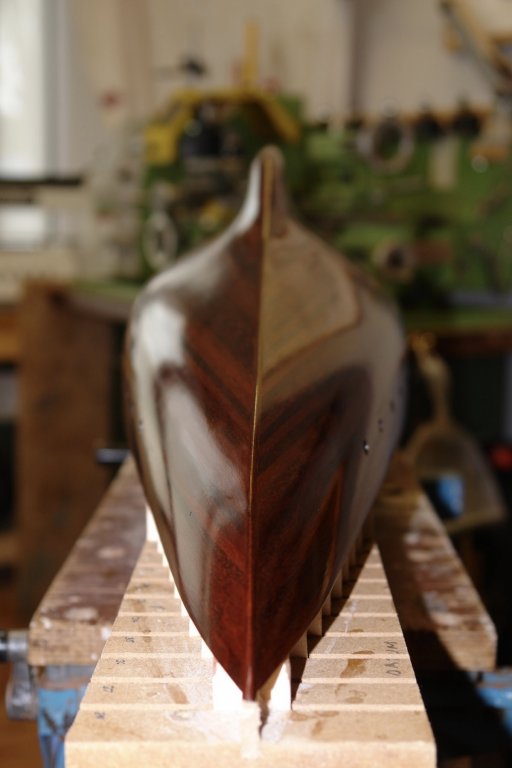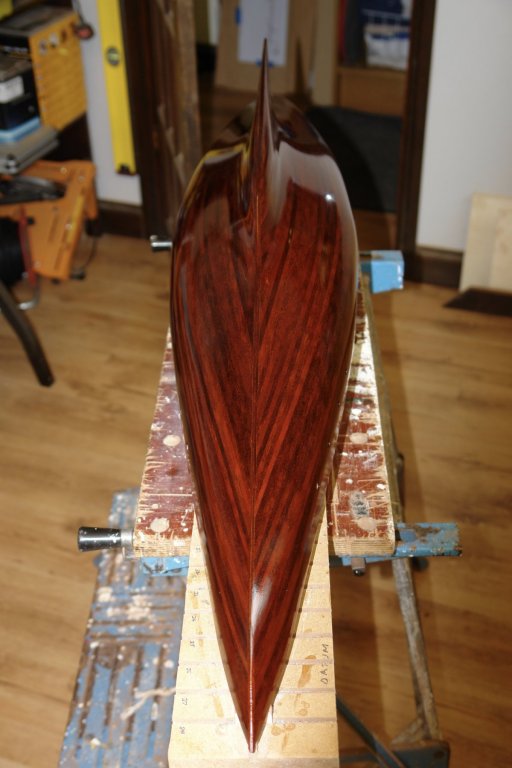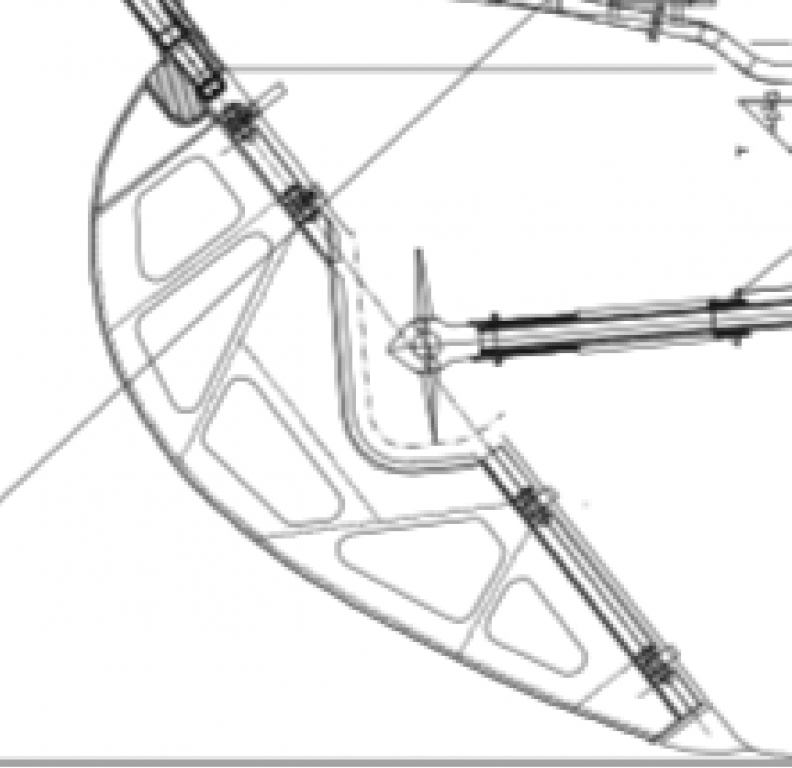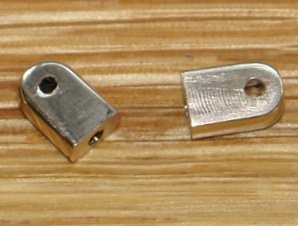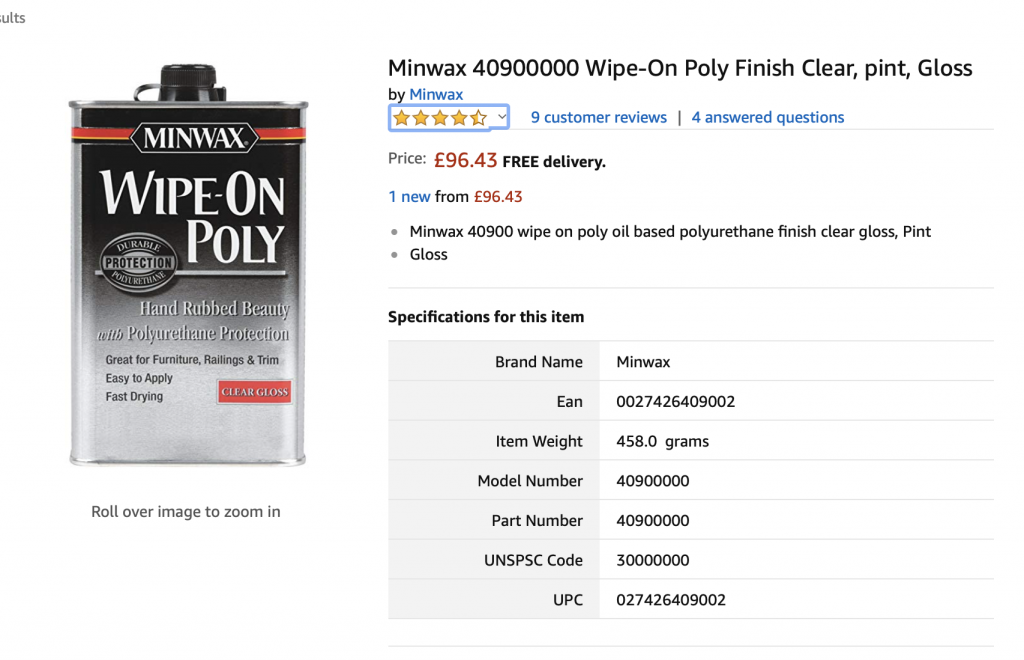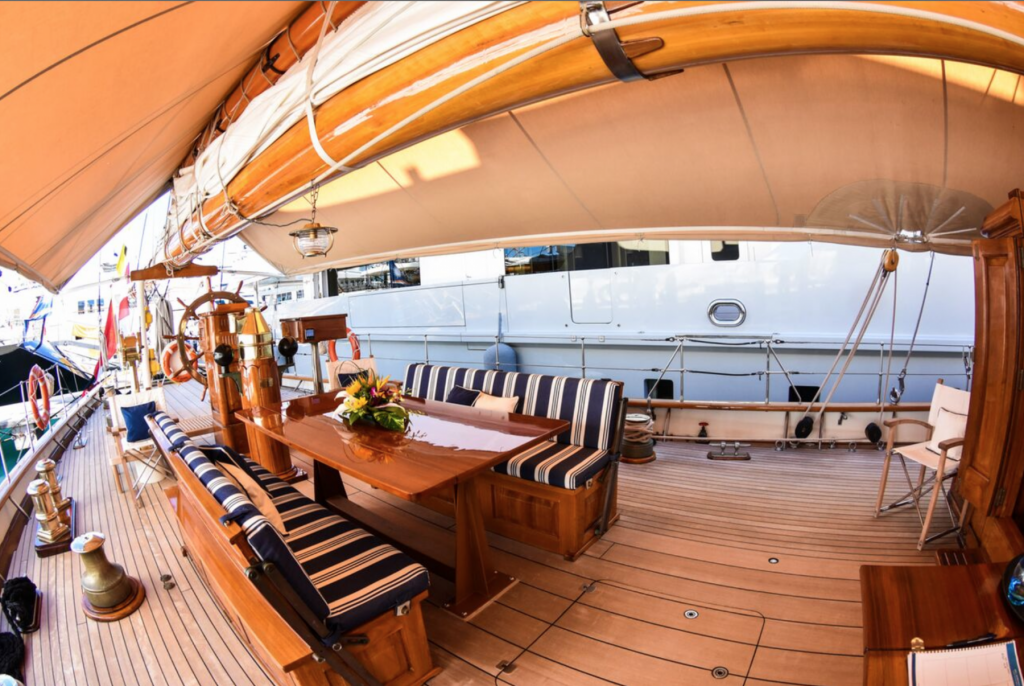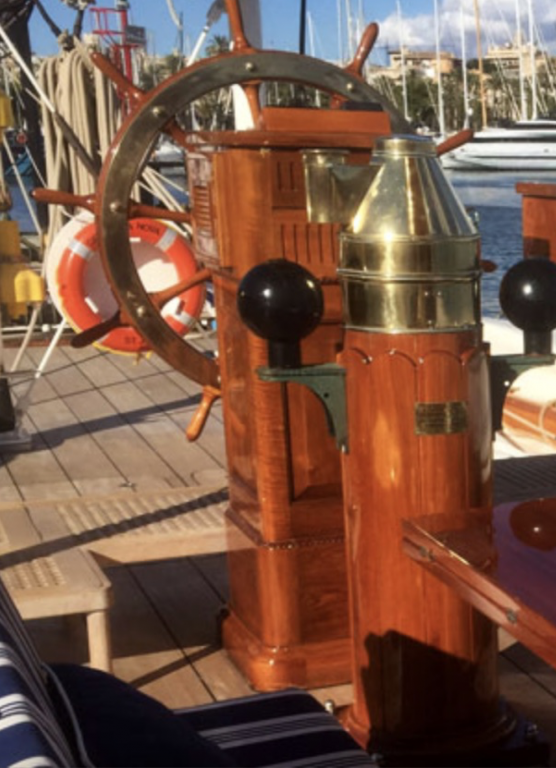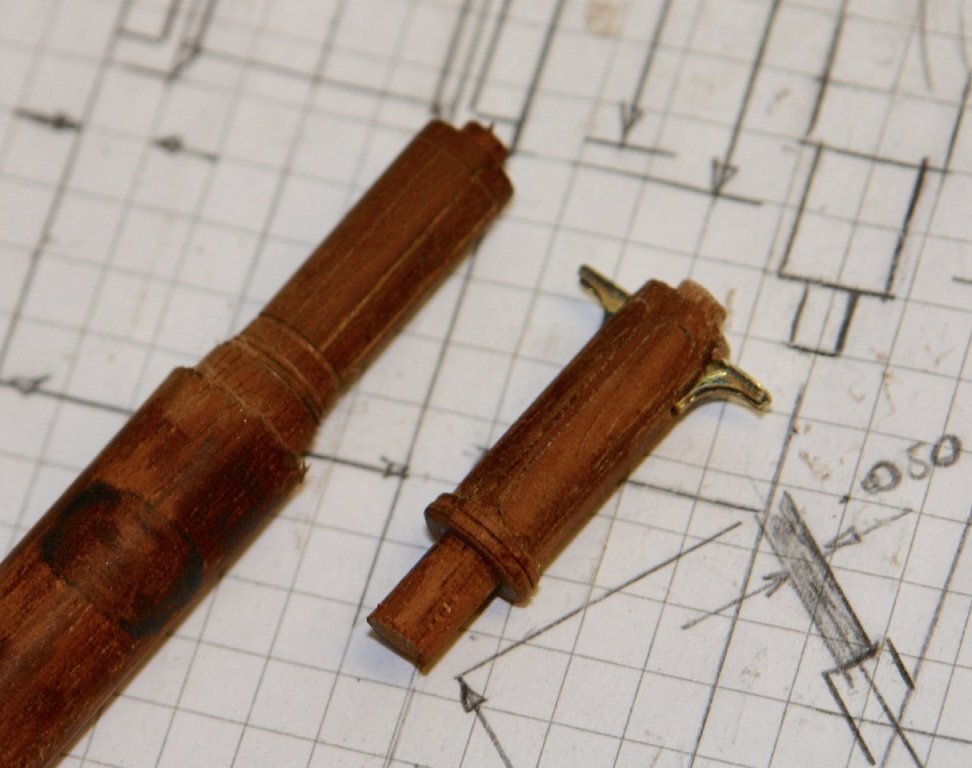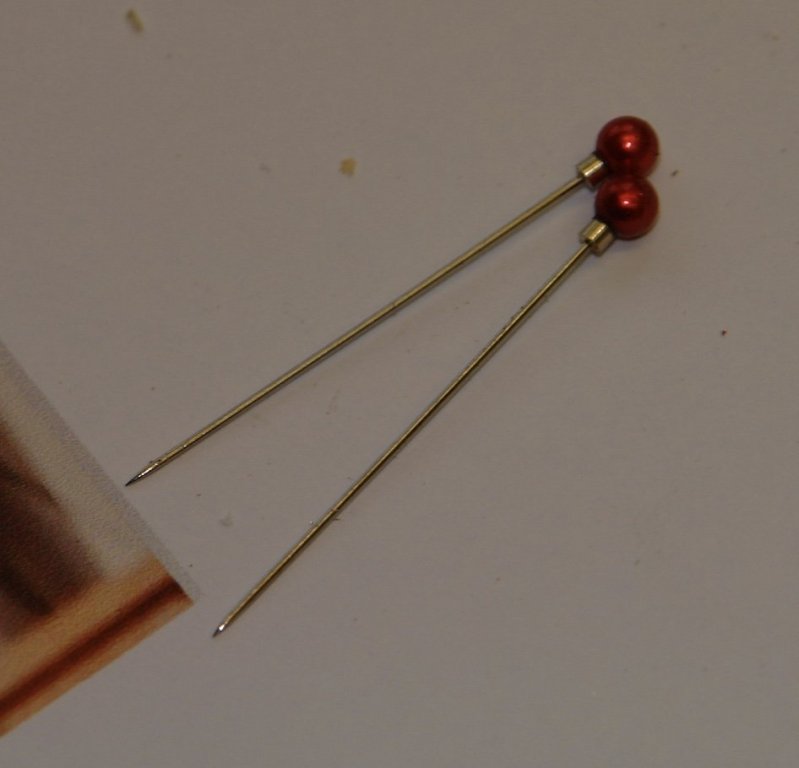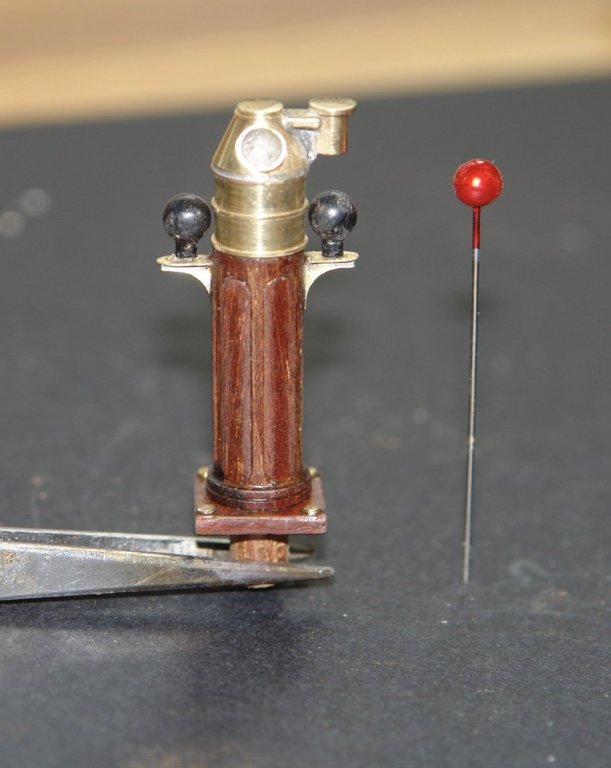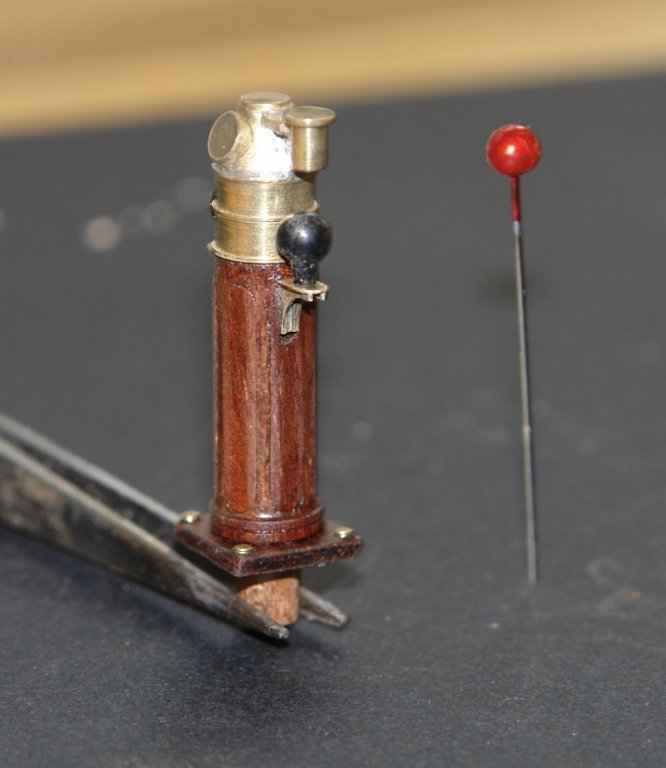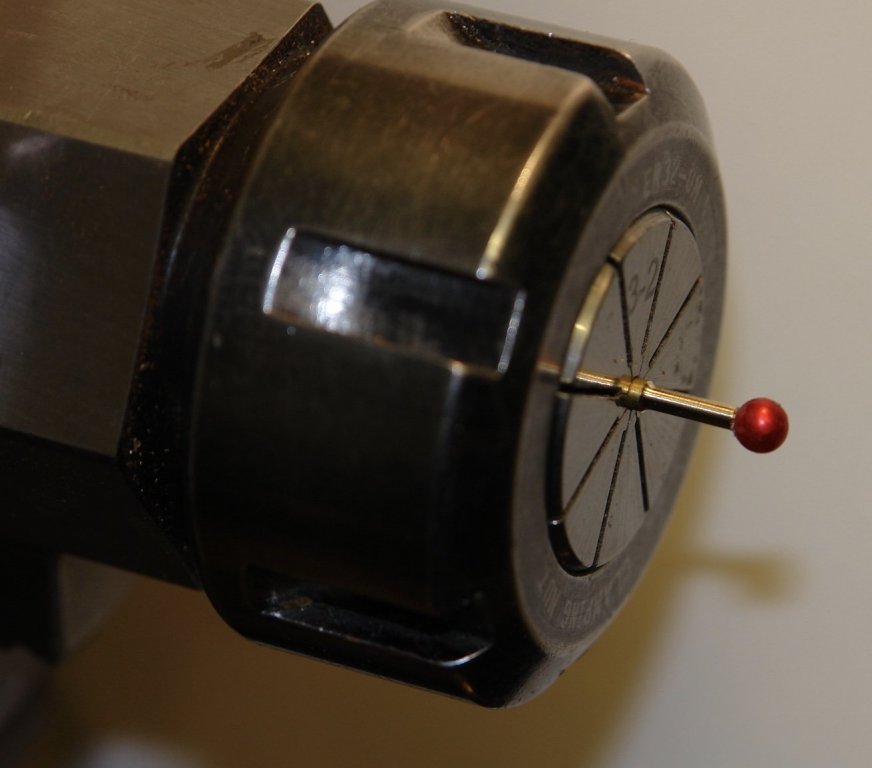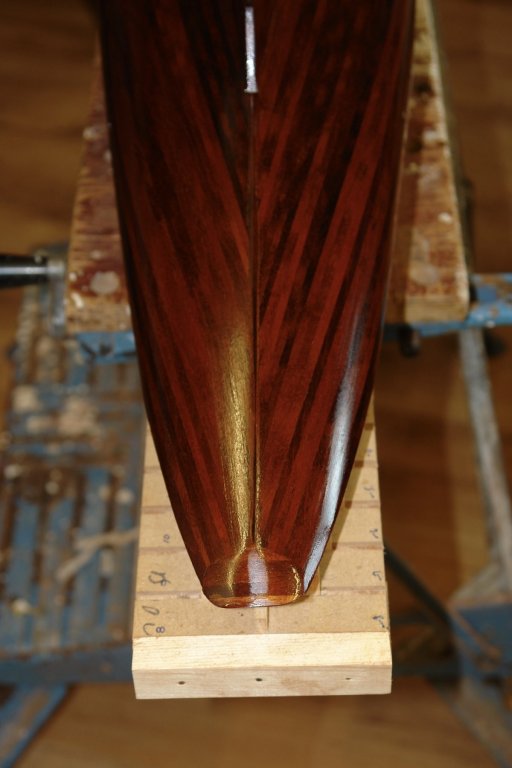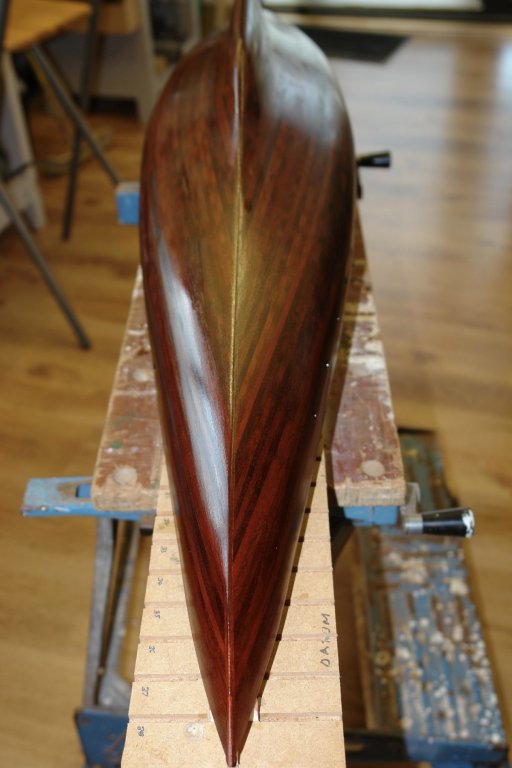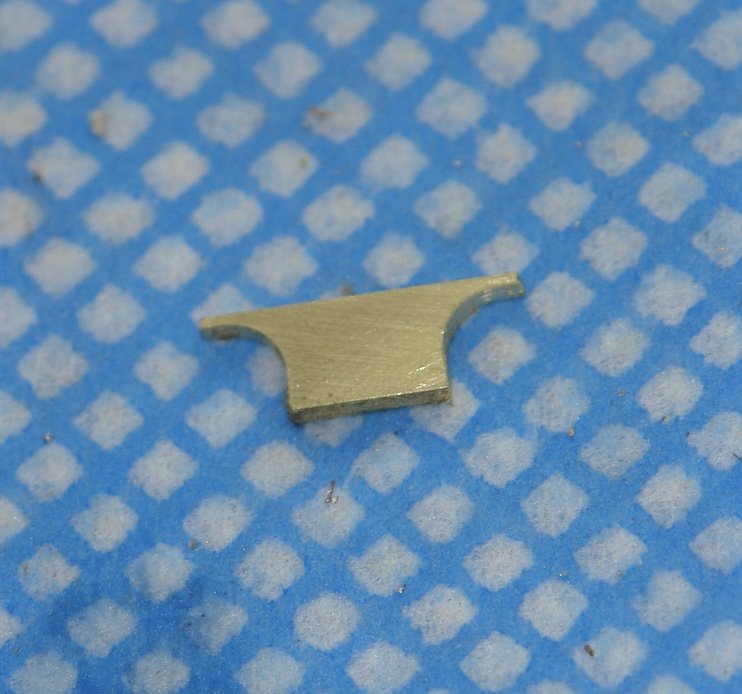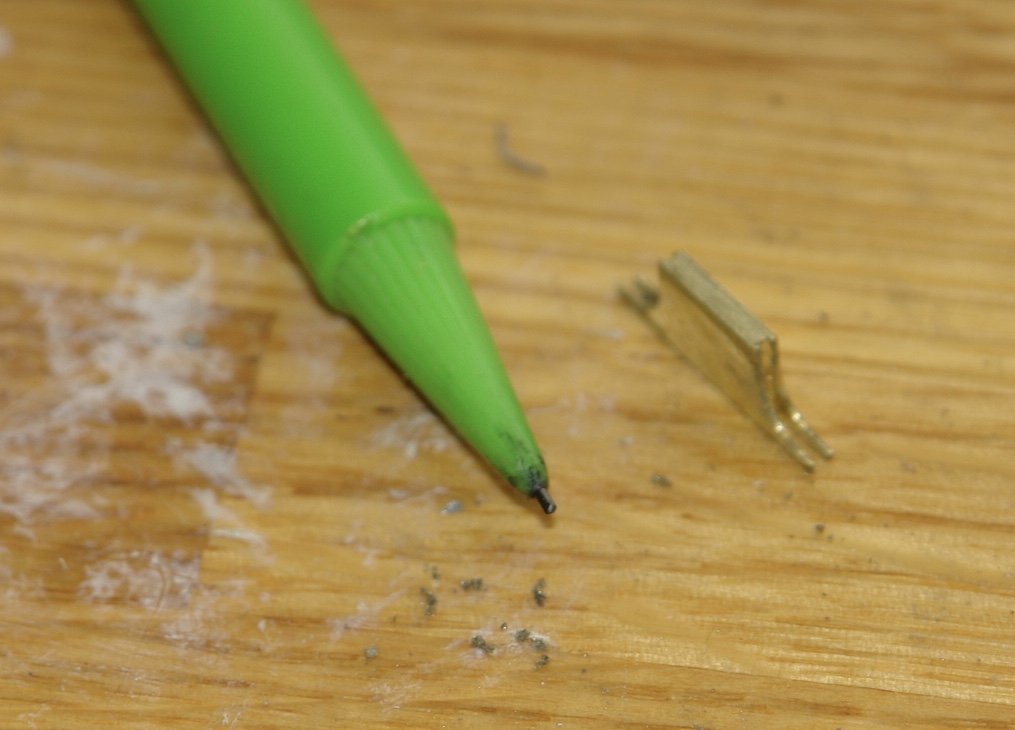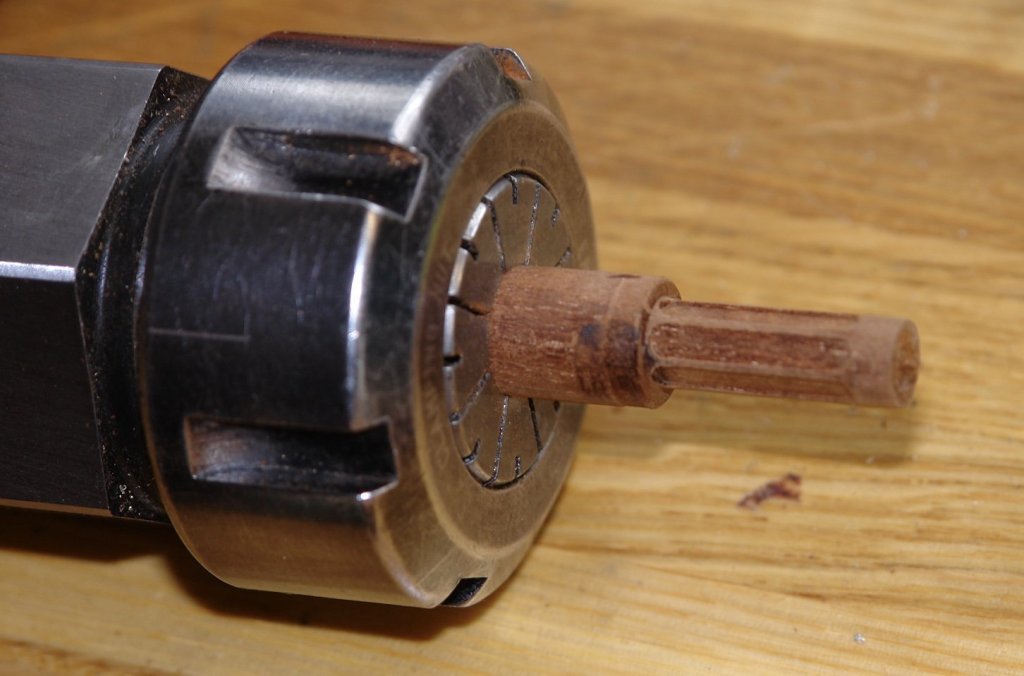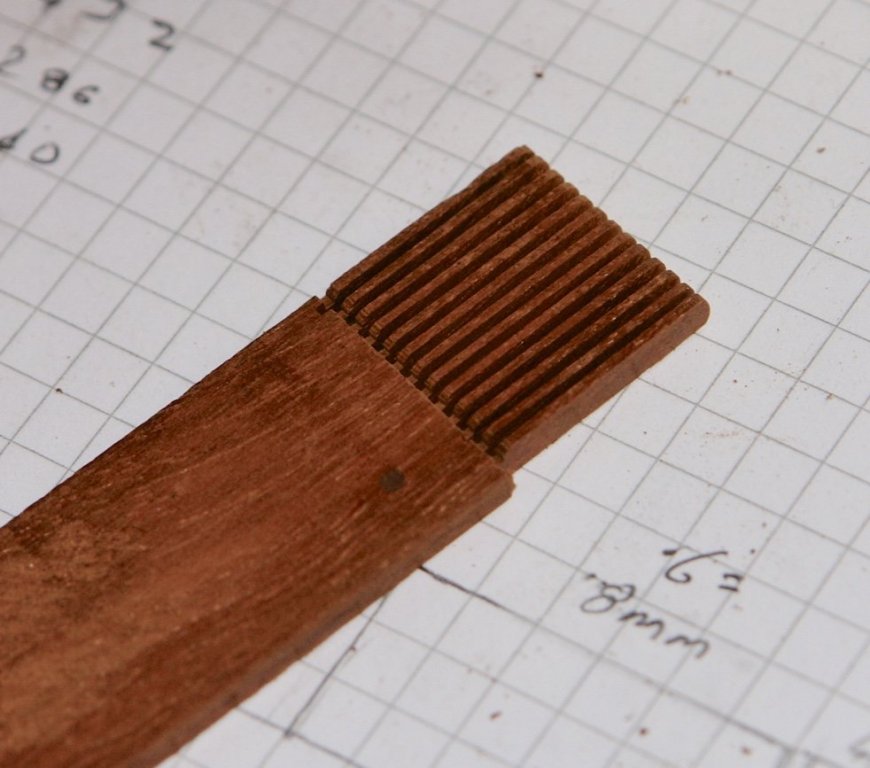-
Posts
3,926 -
Joined
-
Last visited
Content Type
Profiles
Forums
Gallery
Events
Everything posted by KeithAug
-
I agree they are so elegant - I'm looking forward to see how your build develops.
- 26 replies
-
- gigino
- brigantine
-
(and 1 more)
Tagged with:
-
Sorry Keith - they are not the correct brand and I can't reveal what is in case you are accused of insider trading. I finished the rudder - which involved a lot of heavy hand sanding. The trailing edge needed to be sanded down to just under 1/3 of the original thickness at mid height - thickening slightly towards the upper and lower edges. The notches for the gudgeons were slotted out using my jewellers saw and a diamond file. The position of the cut outs was then transferred to the keel and holes were drilled to take the gudgeon pins. The whole lot was then test assembled and the free swing of the rudder was checked. I won't actually mount the rudder until towards the end of the build. This will give me ample time to misplace it.
-
Pat, Patrick, Bedford, John, Gary - thank you for your comments. the finish isn't quite there yet but with a few more coats I should be happy. Also thanks to everyone who has visited / liked. Anyway here is the result of the next two coats - it feel like I am on diminishing returns. I started on the rudder. It is made out of 0.250" wide mahogany. I cut a number of planks and slotted one on the mill. I cut a template out of 1/8" ply and shaped this to the plan before offering it up to the hull and then making final adjustments to fit. The slot is to take the brass tubes down with the pintle will slide. These tubes were glued with CA. I want the grain on the rudder to run in the same direction of the hull planks which means gluing the planks from which the rudder blade is made at an angle to the slotted plank. Not easy to hold this while glueing with PVA. It may have been better to use CA glue. Anyway one at a time the "blade" planks were attached. The template was then used to transfer the rudder shape to the assembly. The scroll saw was then used to cut the rudder to shape before the edges were brought to size on the disc sander. The rudder needs to be shaped and I wanted to crate guide lines to ensure both sides would be the same. I drew and printed guide lines on the computer. And then used PVA to glue these to the front and back edges of the rudder.
-

UK - wipe-on-poly brand?
KeithAug replied to bruce d's topic in Painting, finishing and weathering products and techniques
I don't see why not Keith. Or should I say "I don't see why knot". -
Good to see you back Pat - Amazing engine room - however I think you have mistakenly omitted the warp drive.
-
Kortes - Lovely little stove. I like the chimney fitted.
- 306 replies
-
- schooner
- la jacinthe
-
(and 1 more)
Tagged with:
-
Eberhard - I had a quick trawl of the internet but didn't turn up anything relevant. I will keep a look out. I think I am now on coat 9 and I'm starting to get happy with the finish. I'm pretty pleased with the surface which has none of the dints and dimples that sometimes occur with a natural wood finish. The coat is still wet in the following pictures. The transom isn't right because the top line needs sanding back. I will do this when it is removed from the building board. I needed to sort out the mounting of the rudder. The plans I have are not very clear in this respect. However I am pretty sure there are 4 mounting points plus the top and bottom bearing. Anyway I scaled the gudgeons as best I could - 0.275" long x 0.200" wide x 0.100" thick. I made them from 0.250" round bar - turned down to 0.200" diameter with a hemisphere turned on the end with a profile tool. The last operation on the lathe was to drill 0.060" hole along the axis. I then moved to the mill and milled off 0.050" from each side to give a thickness of 0.100". Finally I drilled another 0.060 hole at right angles to the axis for the pintle. I then did a bit of polishing. I then soldered on the pegs which will attach the gudgeons to the keel.
-

UK - wipe-on-poly brand?
KeithAug replied to bruce d's topic in Painting, finishing and weathering products and techniques
Ah another Sussex member - we are probably neighbours and don't know it. Very hot here today - but at least the workshop is a comfortable 18 degrees. -

UK - wipe-on-poly brand?
KeithAug replied to bruce d's topic in Painting, finishing and weathering products and techniques
Bruce, Wipe on poly is just normal oil based polyurethane diluted with white spirit. I just buy Wilko own brand poly and dilute it 1:1 with white spirit. I am using it at the moment on my Germania build if you want to see what it looks like. You can buy it at Amazon - but don't - silly price. -
Eberhard - that would make sense. The skylight is over the "owners" cabin and it is going to be quite claustrophobic with only a couple of small port holes. On the other hand if you look at the recent deck in this area it isn't exactly obvious where it would fit - the hatch that replaces it seems to be quite small in comparison.
-
Eberhard - here are another 2 views. If you look at the first of the 2 previous photos you can see the Flinder's bar in profile. In the profile view below it does not appear. Probably more conclusive however is the next photo. The brass plate seems to be over where the top bracket of the Flinder's bar would have been.
-
Eberhard - thank you. I'll recommend them to "The Borrowers". A very interesting question John and no doubt worthy of further debate. The next photo is of Germania Nova as built. I deduced this because of the unusual skylight structure just in front of the small table. This is a reproduction of the skylight on the original Germania. You will also see that Binnacle has the Flinders bar. At some time the skylight structure was removed to accommodate a much more practical deck table. As part of this conversion the flinders bar seems to have been removed - see photo. Not sure why they would have done this - but clearly they did. The earlier version with the skylight is an interesting modelling challenge but I personally think it looks like a bit of a carbuncle so I am building the modified version - hence no flinders bar. John I did think of doing this, its just that the original builders got a good deal on a can of black - so that is what they painted it - as per photos above. Thank you Pat.
-
I think they have just found a way to make a lot of money!!!!!!!!!!
-
Kortes - lovely sweep to the tiller - everything looking beautifully crafted.
- 306 replies
-
- schooner
- la jacinthe
-
(and 1 more)
Tagged with:
-
Thank you Gary. So to continue with the binnacle. The next step was to slot out the end of the pedestal to take the bracket. I finished the bracket by soldering on the top web and I also glued the 6 panels in to the pedestal. I compared the result with an alternative version of the pedestal made by scoring on simulation panel. The scoring was done on the lathe. I liked the alternative but decided to go with the more accurate panelled version. I then needed to make the the balls so hunted through my ball bearing jar for the correct size (.160"). I couldn't find any but then in a flash of inspiration I decided to check the diameter of the ball on the end of dressmakers pins that I have. It turns out to be .158" - pretty amazing really. The pins required collars (.060" diameter by .050" tall) - turned on the lathe. The shanks of the pins were cut off and the balls painted and glued in place. The base of the pedestal was cut, drilled and 4 simulation mounting studs inserted. I have included the pin in the photos for scale.
-
Starting to look a lot more ship shape Jon. A good read - thank you.
- 57 replies
-
Yes Eberhard I will slot the binnacle on the mill. I agree that making accurate narrow slots is much easier using machinery. Welcome back Michael. I too am about to enter the silly season for excursions.
-
An interesting subject Phil - and so full of character.
- 355 replies
-
- prince de neufchatel
- schooner
-
(and 3 more)
Tagged with:
-
Thank you all for your continue interest and comments. I quite enjoy the discussions on finishes so don't feel inhibited. I have lost count of the number of coats but I think its about 6. The previous coat refused to dry in the workshop or in the boiler room. After 36 hours it was still tacky and unfit for further treatment. In desperation I stuck it on a table in the garden and a few hours later it was bone dry. I'm not sure wether it was the breeze or the sun (UV?) but what ever it was it did the trick. I took the opportunity of giving it a good rub down with wire wool before returning to the workshop for the next coat. Here is coat 6 (or something like that). Still some way to go! Otherwise I continued to busy myself with the binnacle - making the support bracket for Mr Kelvin's spheres. I didn't think I could make and mount individual brackets so I made both in one piece - this will pass through the pedestal. The bracket is .075" thick and was cut from .025 wide brass strip - shaped on the mill. It is currently too deep at .025" and will be reduced to .150" later. To create the bracket webs I cut a slot at each end with a 0.6mm (.024") slitting saw. The top of the bracket will be soldered on later. I tried 2 versions of the pedestal - the first was a more accurate interpretation of the original and had inserted panels (although 6 rather than the 10 the original seems to have). I turned the pedestal and then milled out 3mm (.118') wide slots to take the panel inserts. A strip of wood was cut to 3mm thickness to form the basis of the infill panels. This was then shaped to semicircles on the ends before being slit down to .025" thick on the table saw (using a 0.6mm (.024") blade). To be continued-----------
About us
Modelshipworld - Advancing Ship Modeling through Research
SSL Secured
Your security is important for us so this Website is SSL-Secured
NRG Mailing Address
Nautical Research Guild
237 South Lincoln Street
Westmont IL, 60559-1917
Model Ship World ® and the MSW logo are Registered Trademarks, and belong to the Nautical Research Guild (United States Patent and Trademark Office: No. 6,929,264 & No. 6,929,274, registered Dec. 20, 2022)
Helpful Links
About the NRG
If you enjoy building ship models that are historically accurate as well as beautiful, then The Nautical Research Guild (NRG) is just right for you.
The Guild is a non-profit educational organization whose mission is to “Advance Ship Modeling Through Research”. We provide support to our members in their efforts to raise the quality of their model ships.
The Nautical Research Guild has published our world-renowned quarterly magazine, The Nautical Research Journal, since 1955. The pages of the Journal are full of articles by accomplished ship modelers who show you how they create those exquisite details on their models, and by maritime historians who show you the correct details to build. The Journal is available in both print and digital editions. Go to the NRG web site (www.thenrg.org) to download a complimentary digital copy of the Journal. The NRG also publishes plan sets, books and compilations of back issues of the Journal and the former Ships in Scale and Model Ship Builder magazines.



